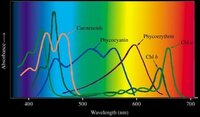Hi all,
This should now say "
read the post above", but as I've typed it all out I'll leave it up.
The tubes from Lampspecs have a lesser kelvin level compared to the Hagen tubes that I use and there is no mention of the kinds of photosynthetically active radiation (PAR) that emit from them, i.e. the colours of the light being emitted such as reds and blues.
Unfortunately without a PAR/PUR meter it is difficult to compare tubes directly, but you can use the specs. of the tube/ballast unit to give you an idea.
For the ballasts, electronic ballasts are more efficient than magnetic ones, and all newer T8 and T5 fittings will be electronically ballasted.
Thin diameter tubes are more efficient, so a T5 tube will produce more light than a T8 tube of equivalent wattage. Linear tubes are more efficient than compact fluorescent (CFL) fittings and the more turns in the tube the less efficient it is. Fluorescent tubes are "discharge lamps" which produce UV, this is then converted to visible light by phosphors on the inside of the tube, modern lamps are all "tri-phosphor" and produce a wider spectrum of wave lengths than single phosphate tubes. Lamp lumen maintenance is how well light intensity is maintained over lamp life and it is above 90% for electronically ballasted tri-phosphor T5 tubes.
Wattage is a measure of the energy used by the fitting and it can't be compared across tubes and fittings in terms of light produced. Lamps are now quoted in lux values, this is how bright a light is compared to a "standard candle". Lux values are of very limited value, but as a very general rule of thumb you need about 500lux to support any plant growth (this will be LCP (light compensation point) for mosses etc, most higher plants will need more than 1000lux). Lux vales decline as the square of the distance from a point source (the light spreads in a cone, therefore more coverage = less intensity).
Kelvin (K values) is the light colour compared with a the irradiation of a "black body" (an idealised radiating object) heated to that temperature in degrees Kelvin (degrees centigrade + 273). The higher the colour temperature, the bluer the light. These are the colour temperatures of some light sources: Open sky - approx 20,000 K, Overcast sky - 6,500 K, Direct sunlight - 5,400 K, 100 Watt tungsten bulb - 2,865 K & the "standard candle" flame - 1,930 K.
The other value often quoted is the CRI (Colour Rendering Index) , this is how closely the light mirrors daylight, high CRI values mean that colours will appear similar to under daylight to the human eye.
None of these measures are directly relevant to plants, they are all measures of human visual perception. Plants have evolved to use light from the sun, which is why "daylights" have a colour temperature of 5000 - 7000K. You also have to take into account the wavelengths utilised by chlorophyll.

There are accessory pigments that mop up some of the light not utilised by chlorophyll a and chlorophyll b as well.
What does this all mean? it means that you can use any lamp from 2000K up to 20000K, those about 5000- 7000K are likely to chuck out more PAR, but we can't measure this directly without a PAR meter.
Based upon some experiments with
Cabomba and various grow-lights <
http://www.saps.org.uk/secondary/te...n-evolution-in-the-process-of-photosynthesis->, the "best" light I have is a mixed Red & Blue 13.8w "300mm x 300mm 225 LED Tile" bought for £20 from Amazon.
cheers Darrel







